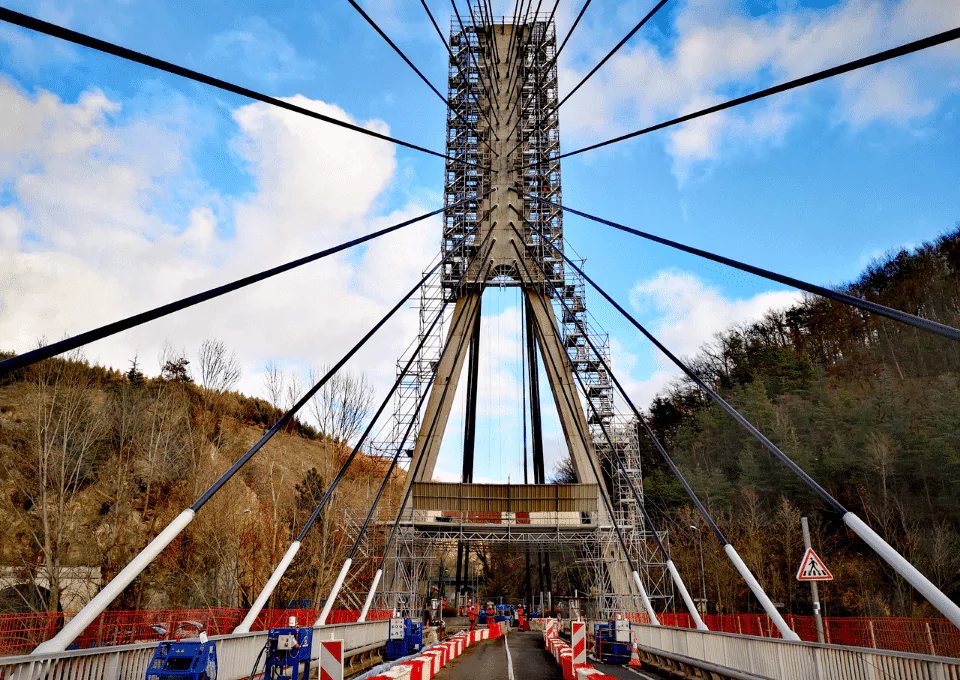Ensuring the durability and safety of stay cables is essential for the reliable performance of cable-stayed bridges and other structures. These critical components face constant exposure to dynamic loads, shifting weather conditions, and, in rare instances, extreme events such as fire, ice, or even acts of vandalism.
With decades of expertise in designing and supplying stay cables for a wide range of structures, Freyssinet offers a full suite of technical solutions and specialized services for maintaining and restoring all types of stay cables and suspension systems.
